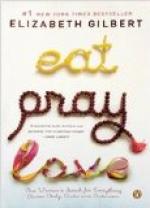“The word Hindu is generally used in a very broad sense to cover all the native population of Hindustan or India; but it is really applicable to a religion, and belongs only to those of the Hindu, or the faith of the Brahmins; but, like most others, it consists of a great number of sects. Of this belief there are about 200,000,000 people. They are divided into four grand classes, called castes. The Portuguese called them casta in their own language, from which the present name comes. I call them grand classes, or castes, because they are divided into many sub-classes.
“When the Aryans, who came from Europe, and Asia farther north than India, obtained a foothold here, and established themselves, they looked down upon other people in the land, and called themselves the twice-born, or born again, as some modern sects have it. They claimed to have experienced a second, or religious, birth, indicated by a certain cord with which they were invested at a particular age. The natives of the soil and all other outsiders were the once-born.
“In the lapse of time the twice-born were divided into three classes, the Brahmins being the priestly class, the Kshatriyas the ruling military, and the Vaisyas the agricultural classes. These were of the upper grade; and all the once-born were called Sudras. These four classes are the origin of caste, though the divisions have been greatly changed. The Vedas are the four oldest sacred books of the Hindus, otherwise the Hindu Scriptures.
“Derived from their holy books is the allegorical idea that the Brahmin, or priest, was the mouth of the original man; the warrior his arms; the agriculturist his thighs; while the Sudra, or common people, sprang out of his feet. The duties and relations of the four castes are defined and stated in the laws of Manu.”
“We have not been introduced to him,” suggested Mrs. Woolridge.
“He is regarded as the author of the most noted law-book among the Hindus; but there is so much that is mythical and contradictory said of him, that I will say nothing more about him; but he is authority among the Brahmins. In modern caste the Brahmin is the minister of religion; he alone mediates between God and man, makes sacrifices, and teaches the sacred Veda. His life is portioned off into periods of special duty. As a student he learns the Veda; then he gets married, becomes a householder, and must every day perform the appointed sacrifice. Some of them live in the woods, as hermits, or live like monks, till they are said to be absorbed into Brahma.
“The soldier’s sphere is in connection with the State, to support the Brahmin, and execute the laws he makes or interprets. The third class cultivate the soil as proprietors, and engage in trade and commerce. The Sudra is the servant of all the others. Resulting from the intermarriage of members of different castes there are various mixed classes. The lowest is the child of a Brahmin mother and a Sudra father, though in Southern India the Pariah is still lower.




